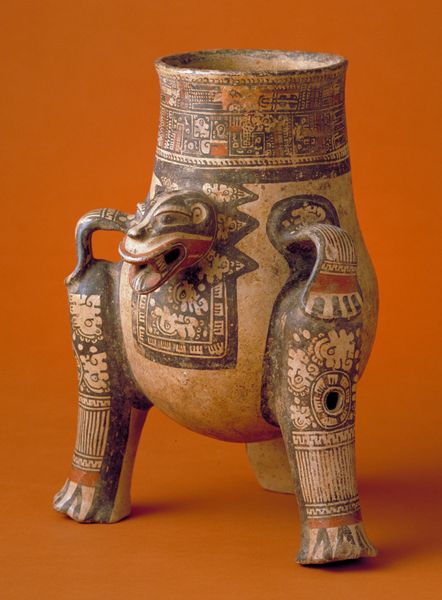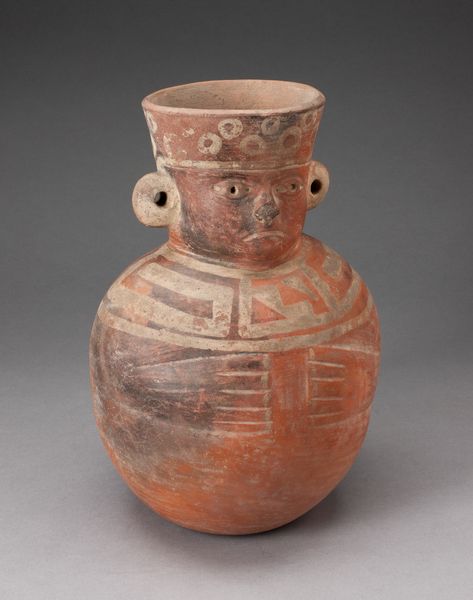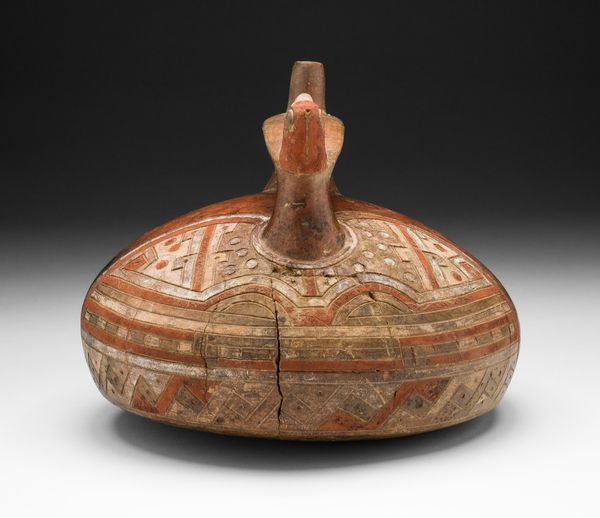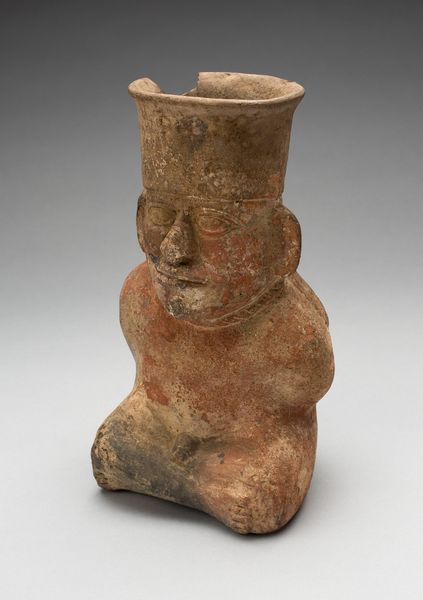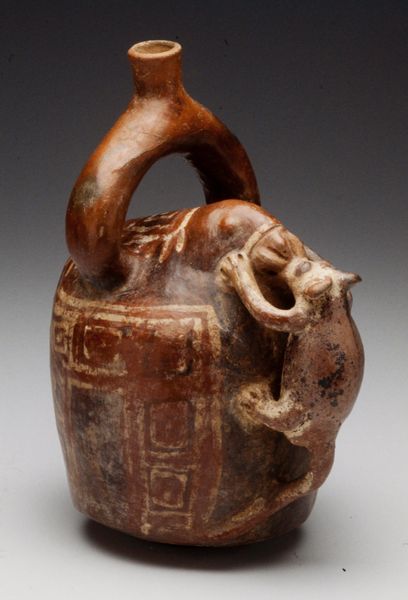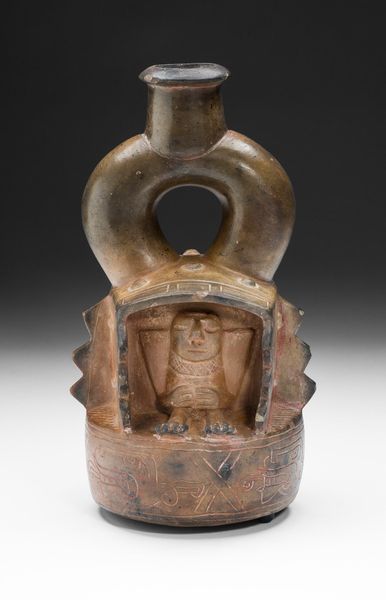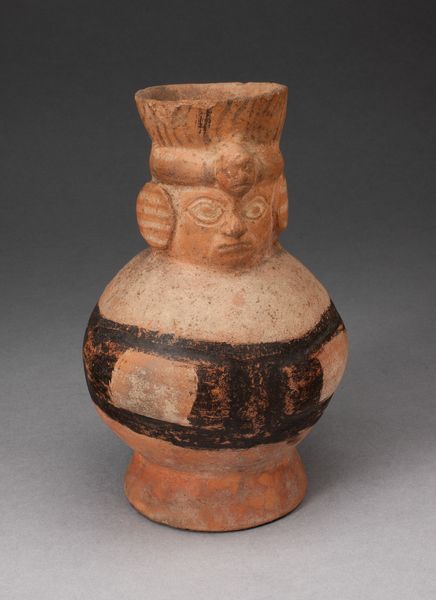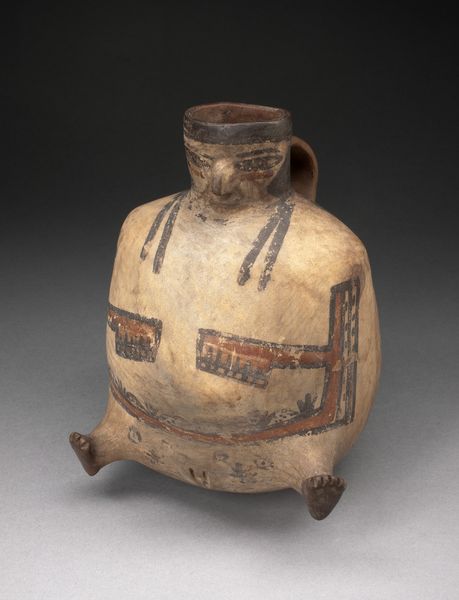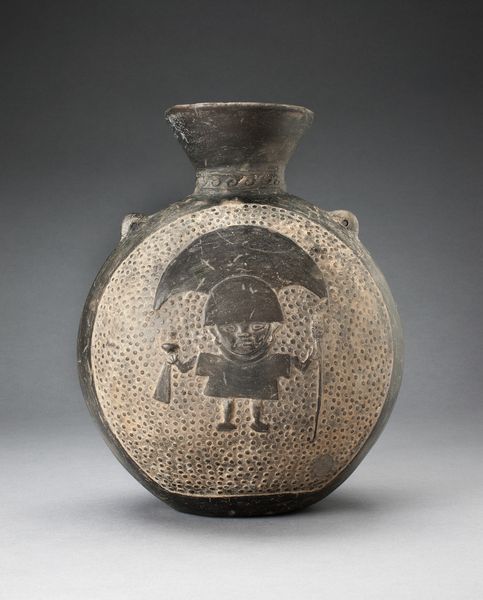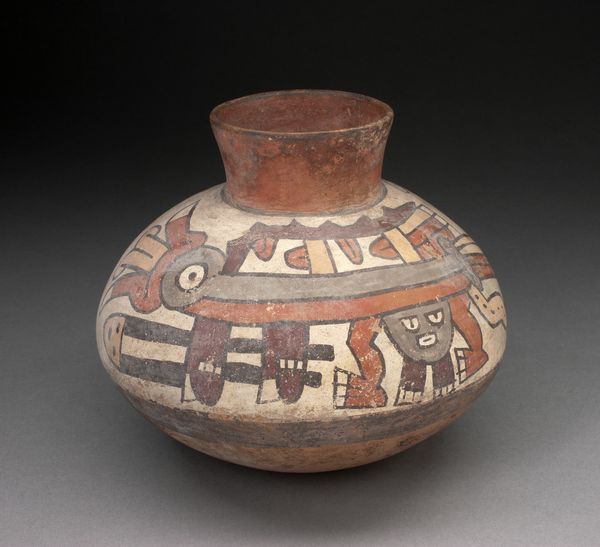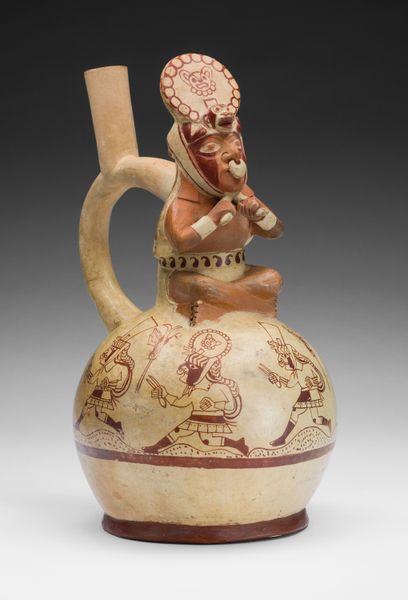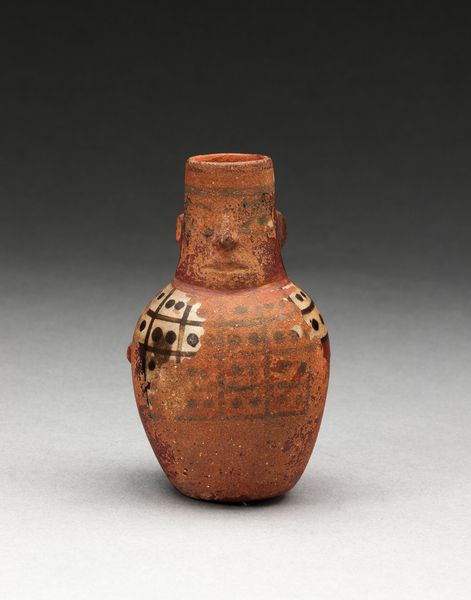
ceramic, earthenware
#
ceramic
#
figuration
#
earthenware
#
indigenous-americas
Dimensions: 9 x 8 7/8 x 7 7/8in. (22.9 x 22.5 x 20cm)
Copyright: Public Domain
Curator: This ceramic vessel, dated to approximately 1200, is known as a Tripod Vessel. It comes to us from the Guanacaste region and is now part of the collection at the Minneapolis Institute of Art. Editor: It’s arresting! A chunky earthenware body balances on stubby feet, embellished by a central animalistic motif. The color feels wonderfully earthy. It all makes the object very appealing, I must say. Curator: Vessels of this type tell us much about the socio-political structures and artistic traditions of the Guanacaste people during this period. Ceramic work, especially elaborately decorated earthenware like this, often served ceremonial or status-related functions. Its presence in the Minneapolis Institute of Art allows for cross-cultural dialogues, broadening perspectives on indigenous art within a global context. Editor: From a formal perspective, the rotund volume contrasts so pleasingly with the graphic linearity of the painted motifs above. The placement of that stylized creature with elongated limbs gives the pot real animation, a kinetic energy even while still. Did this piece hold significant metaphorical or symbolic value? Curator: The animal representation very likely held symbolic meaning linked to Guanacaste cosmovision. Certain animals were linked with spiritual realms and had ceremonial meaning for the people who used the vessel. These vessels held important ingredients used during rituals such as drinks and food. This is how the objects became a part of the history of the Americas and can tell of a heritage the descendants carry with them. Editor: So it functioned beyond the utilitarian. It bridged practical use and expressive form, and I think the material has aged so beautifully too. Curator: Precisely. This artifact encourages a deeper appreciation of pre-Columbian art and prompts thoughtful discussion about how cultural institutions frame historical objects. Editor: It really shows how complex and beautiful Indigenous American art is.
Comments
No comments
Be the first to comment and join the conversation on the ultimate creative platform.
